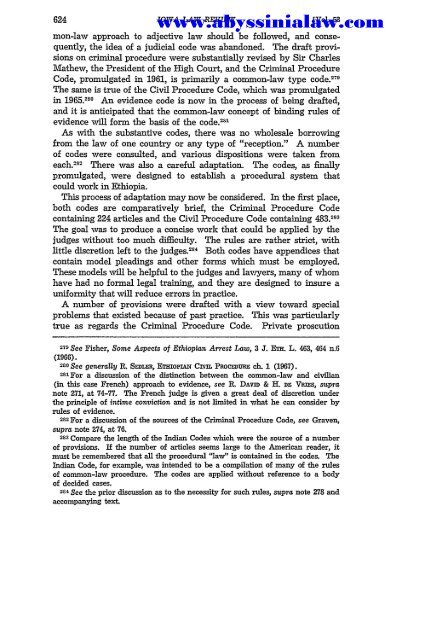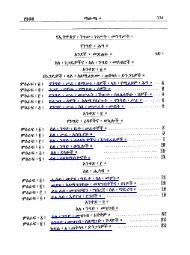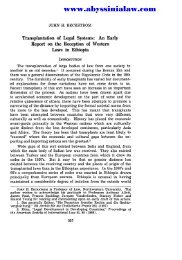You also want an ePaper? Increase the reach of your titles
YUMPU automatically turns print PDFs into web optimized ePapers that Google loves.
IOWA LAW REVIEW<br />
mon-law approach to adjective law should be followed, and consequently,<br />
the idea of a judicial code was abandoned. The draft provisions<br />
on criminal procedure were substantially revised by Sir Charles<br />
Mathew, the President of the High Court, and the Criminal Procedure<br />
Code, promulgated in 1961, is primarily a common-law type code. 2 7 9<br />
The same is true of the Civil Procedure Code, which was promulgated<br />
in 1965.280 An evidence code is now in the process of being drafted,<br />
and it is anticipated that the common-law concept of binding rules of<br />
evidence will form the basis of the code. 28 '<br />
As with the substantive codes, there was no wholesale borrowing<br />
from the law of one country or any type of "reception." A number<br />
of codes were consulted, and various dispositions were taken from<br />
each. - 2 12 There was also a careful adaptation. The codes, as finally<br />
promulgated, were designed to establish a procedural system that<br />
could work in Ethiopia.<br />
This process of adaptation may now be considered. In the first place,<br />
both codes are comparatively brief, the Criminal Procedure Code<br />
containing 224 articles and the Civil Procedure Code containing 483. 283 The goal was to produce a concise work that could be applied by the<br />
judges without too much difficulty. The rules are rather strict, with<br />
little discretion left to the judges. 28 4 [Vol. 53<br />
www.abyssinialaw.com<br />
Both codes have appendices that<br />
contain model pleadings and other forms which must be employed.<br />
These models will be helpful to the judges and lawyers, many of whom<br />
have had no formal legal training, and they are designed to insure a<br />
uniformity that will reduce errors in practice.<br />
A number of provisions were drafted with a view toward special<br />
problems that edsted because of past practice. This was particularly<br />
true as regards the Criminal Procedure Code. Private proscution<br />
270 See Fisher, Some Aspects of Ethiopian Arrest <strong>Law</strong>, 3 J. ErTH. L. 463, 464 n.6<br />
(1966).<br />
280 See generally R. SEDLER, ETHiopiAN CivIL PROCEDURE ch. 1 (1967).<br />
281<br />
For a discussion of the distinction between the common-law and civilian<br />
(in this case French) approach to evidence, see R. DAviD & H. DE Vms, supra<br />
note 271, at 74-77. The French judge is given a great deal of discretion under<br />
the principle of intime conviction and is not limited in what he can consider by<br />
rules of evidence.<br />
282<br />
For a discussion of the sources of the Criminal Procedure Code, see Graven,<br />
supra note 274, at 76.<br />
283 Compare the length of the Indian Codes which were the source of a number<br />
of provisions. If the number of articles seems large to the American reader, it<br />
must be remembered that all the procedural "law" is contained in the codes. The<br />
Indian Code, for example, vas intended to be a compilation of many of the rules<br />
of common-law procedure. The codes are applied without reference to a body<br />
of decided cases.<br />
28<br />
4 See the prior discussion as to the necessity for such rules, supra note 278 and<br />
accompanying text.





